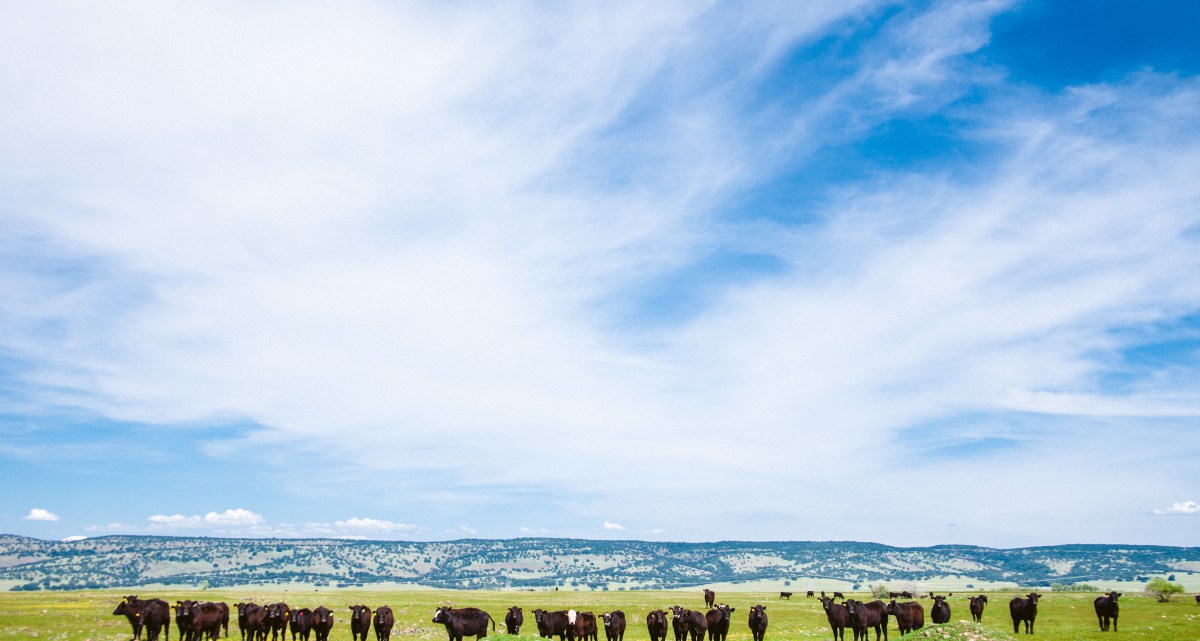Maybe your burger is born on Sweet Ranches, 45 minutes outside of San Francisco, just in time for fall rains to turn the fields green. At the ranch, on the edge of the San Francisco Bay, Darrel Sweet breeds calves that he’ll eventually sell to Harris Ranch, a commercial feedlot in Coalinga, California, where they’ll finish their lives eating corn and silage, the way all grain-fed cows do.
Or maybe your burger is born the previous spring, two hours north, on SunFed Ranch in the foothills of Modoc County, where Matt Byrne’s family has been ranching since the 1870s. Until about 10 years ago, these cows were likewise finished on grain. But now they are grass-fed from birth until death, meaning it takes them longer to fatten up and mature.
There’s a lot of confusion about grass-fed and grain-fed beef. What do the labels mean? Is one better for you than the other? Is one better for the cow, or for the environment?
To put it simply: There are benefits to burgers made from both kinds of beef. The beef from grain-fed cows tends to have a more consistent flavor and texture and is available year-round. Grass-fed proponents say grass-fed meat has more “good” fats and that keeping animals on grass promotes soil and watershed health. And that’s before you even get into animal well-being. With these things in mind, we decided to take a closer look.
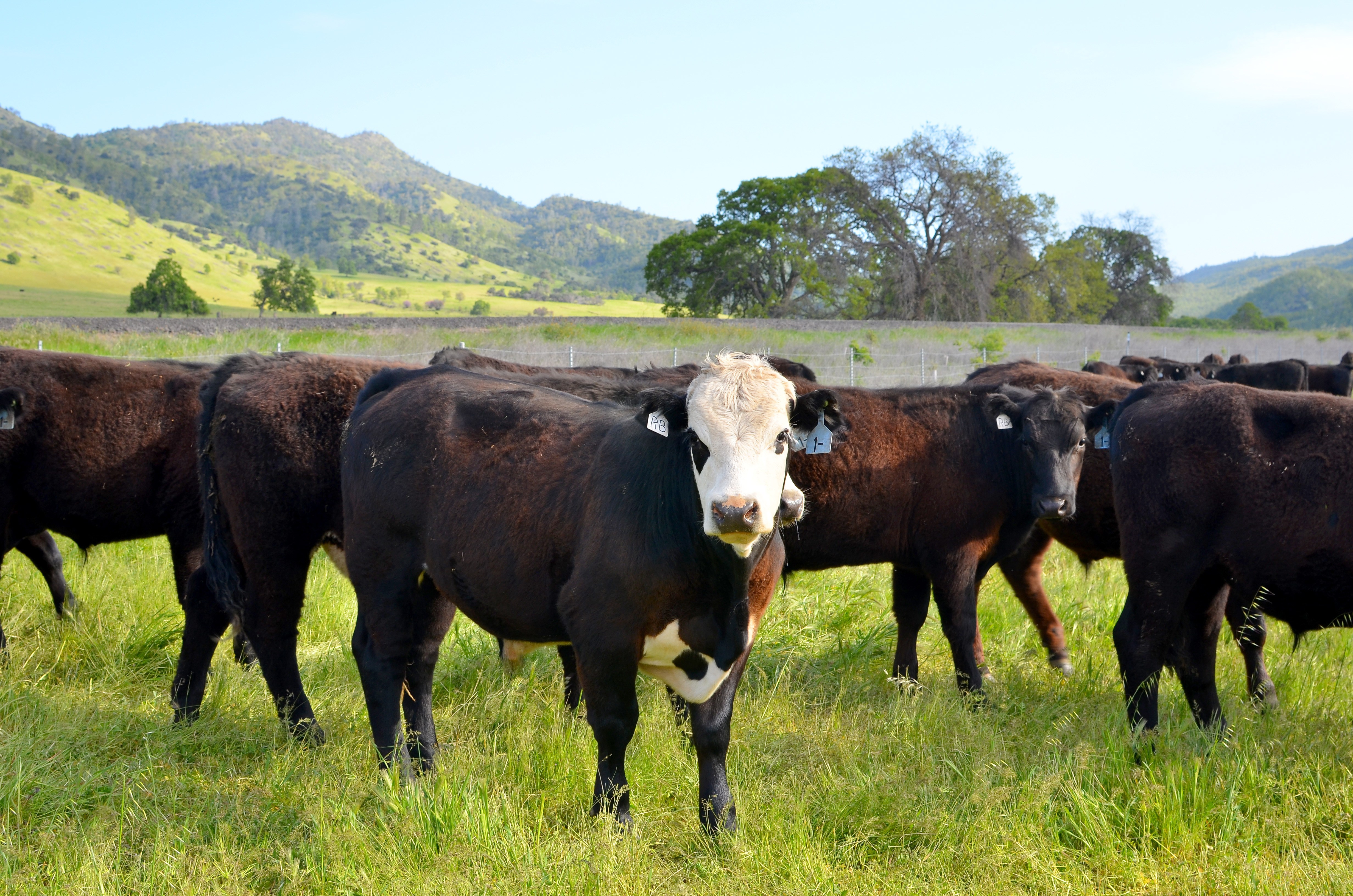
WHAT’S THE DEFINITION OF GRASS- AND GRAIN-FED?
Grain-fed beef comes from cows that have spent any amount of time eating corn or other feed. Grass-fed cows live their whole lives on a pasture.
There’s no federal designation for grass- versus grain-fed status. The U.S. Department of Agriculture (USDA) dropped its grass-fed designation in January, saying it was confusing and not widely used. Consumers couldn’t figure out what they were getting and the differences weren’t clear-cut.
Grass-fed beef makes up a minimal part of the market—around 5 percent—but according to Carrie Balkcom, executive director of the American Grassfed Association, that margin is growing, pushed by a growing consumer interest in knowing where food comes from, and niche diets, like the paleo diet, that incorporate grass-fed beef.
WHICH TYPE OF BEEF IS MORE HUMANE FOR THE ANIMAL?
Regardless of the path the cow destined for your burger takes, things look pretty similar at first. All mother cows live on grass their whole lives, and calves stick by their moms for their first six months of life, regardless of where they end up. In many ways, “grain-finished” is a more apt moniker then “grain-fed” for feedlot cows. Rancher Sweet says his grain-finished cows live in the feedlot for 120 to 140 days, until they’re fat enough to go to slaughter.
Feedlots conjure images of unhappy animals packed in tiny spaces, and in some cases, that’s true. But thanks in part to people like animal behavior expert Temple Grandin, who helped design the Harris feedlot and slaughterhouse, that’s not always the case. In some places, animals have plenty of room to roam and shady, well-drained living spaces, while elsewhere, they’re crammed into tight pens and not allowed to move much.
The standards likewise vary for maintenance of grass-fed cows. After all, there is no real guideline for what “grass-fed” means; some cows that are considered grass-fed have a small amount of access to pasture.
Because cows are ruminants—mammals that break down forage slowly through multiple stomachs—they have to be given grain carefully. They get gassy. If they’re overfed, they can develop things like acidosis, which can lead to liver abscesses, and need to be treated with antibiotics. Feedlot cows live in closer quarters and are more likely to be given antibiotics, like Rumensin, which helps the microbes in their gut adjust to grain-based diets. Groups like the Union of Concerned Scientists and the National Resource Defense Council worry that because agricultural antibiotic use isn’t well regulated, rampant use will up antibiotic resistance to diseases in both animals and people. In 2015, California became the first state to pass a law outlining an agricultural antibiotic regulatory program.
But grain and other processed foods do give the cows some seasonal consistency, which is why it’s been a standard process since the 1800s. Animals living on grass alone are at the mercy of the weather and the crop. And if, for instance, California doesn’t get rain, that can be tough. Animals reach slaughter weight more slowly, or the rancher might have to sell off cows that he can’t support, resulting in a huge financial hit.
The quality of an animal’s life can vary a lot among grain-fed operations and farms where cattle are grazing on grass. If animal health is your ultimate concern, it makes sense to track down the farm your food is coming from and see how they raise their animals. That can be easier to do when you’re buying grass-fed meat, because it tends to come from a single source, but grain-fed beef is not impossible to track.
Grandin has said that there’s a big misconception about the feedlot industry—that they all treat their animals horribly. Grandin, who came up with a metric for evaluating slaughterhouses in 1997 and started working with big meat purchasers like McDonald’s to make its supply chain more humane in 1999, says that she found good and bad practices across the board, and that a lot has changed since then. The industry as a whole has become much more concerned about animal welfare, she says, and a change can impact everything from animal happiness to the quality of the meat. “The size of the [processing] plants had nothing to do with it. The most important thing was the management,” she says. “But in most of the places, we could fix it with simple things: lots of nonslip flooring, lots of improvement in light.”
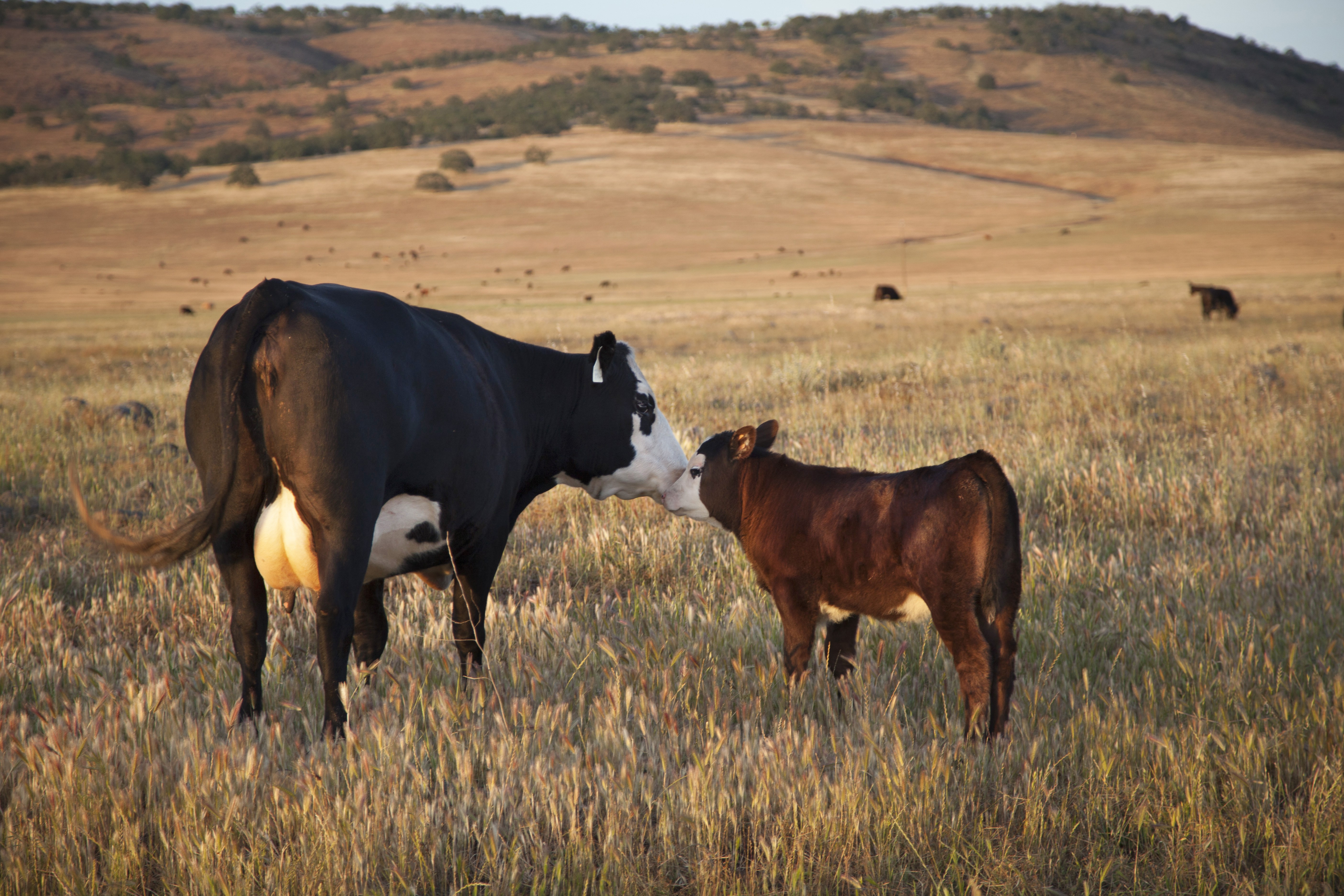
WHICH TYPE OF BEEF IS BETTER FOR THE PLANET?
Beef is hard on the planet, however you look at it. It takes a lot of water, grass and/or grain, and land to breed and feed cattle. And cows produce a lot of methane, a greenhouse gas that accounts for a quarter of man-made global warming. It’s hard to pin down the degree to which they do damage, and there are arguments on both sides of the grass-grain divide about which is worse. “The World Health Organization came out and said grass-fed cows farted more and therefore produced more methane. But they retracted that and said that they had smaller [carbon] footprints than confined animals,” Balkcom, from the American Grassfed Association, says.
Well-managed grazing lands sequester some carbon and running animals on land can be good for soil health but, when it comes to methane, grass-fed cows, which live longer, produce more. Feedlots, which concentrate cows, also concentrate waste; grazing can be hard on pastureland, especially in dry places. A cow, of either type, nets greenhouse gases.
Grain-finished rancher Sweet says he thinks a lot about resource waste and use. He can’t sustainably raise more calves, or raise them for longer, which is why sending cows to Harris to finish on grain makes sense for him. He also believes that finishing cows in feedlots can help sustain a more efficient way to grow food: Cows in a lot can eat agricultural waste. At Harris Ranch, he says, they eat almond hulls and tomato pomace, left over from California’s other agricultural crops. In the Dakotas, cows eat sugar beet tops, and in Washington state, they eat potato plants.
Grass-fed rancher Byrne sees the sustainability game a little differently. He’s trying to build longevity into his fields by treating them well and keeping them healthy, and he thinks running cows on grass is the best way to do that. “The cattle are what they eat,” he says. “We’re not shipping feed to them, and we’re not harvesting grass with tractor.” Byrne calls his ranch SunFed because “we’re really in a solar-powered business—every blade of grass is a little solar panel. We’re using that instead of calling Nebraska for corn.”
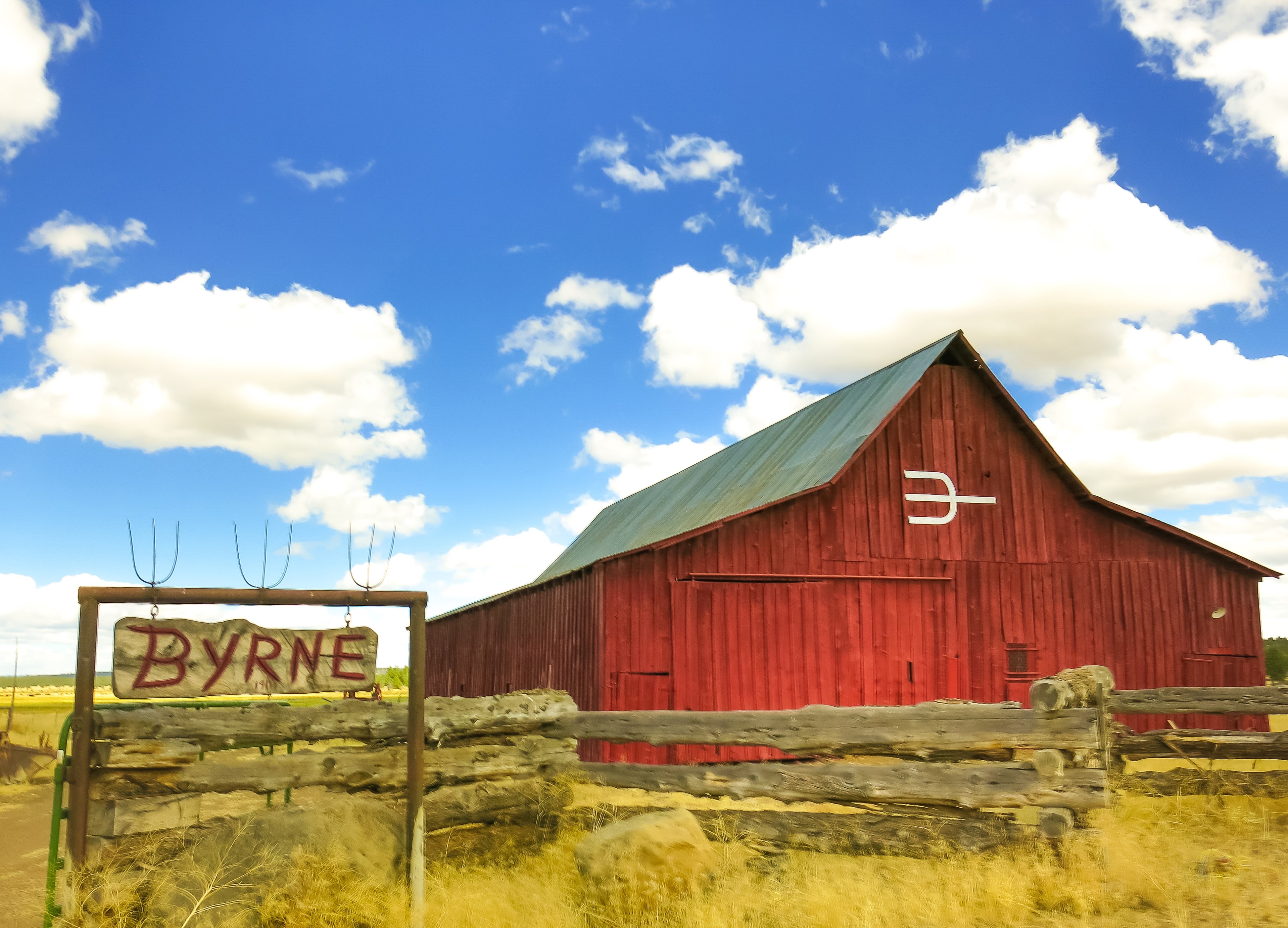
WHICH TYPE OF BEEF IS BETTER FOR YOUR HEALTH?
Grass-fed beef gained popularity on the back of its supposed health benefits. Cows that grazed on grass their whole lives tend to be leaner and develop higher levels of beta-carotene and the fatty acid called conjugated linoleic acid (CLA), which some research has found to reduce inflammation. Grass-fed beef has a better ratio of omega-3 to omega-6, though the difference is minimal.
According to the USDA, grass-fed beef has 65 milligrams of omega-3 in a 100-gram serving. That’s about 20 milligrams more than grain-fed beef, but it’s significantly less than something like tilapia, which has 134 milligrams. If you were really worried about those omega-3s, you’d be eating salmon instead of steak.
“The bottom line, from what I’ve seen, is that there’s a lot of variability in grass-fed and grain-fed beef,” says Alice H. Lichtenstein, Gershoff Professor of Nutrition Science and Policy at Tufts University. “There’s variability in the different cuts of meat and in the types of cows. And ultimately, the differences between the two are not so large that, when it comes to health reasons, it would justify choosing one over the other.”
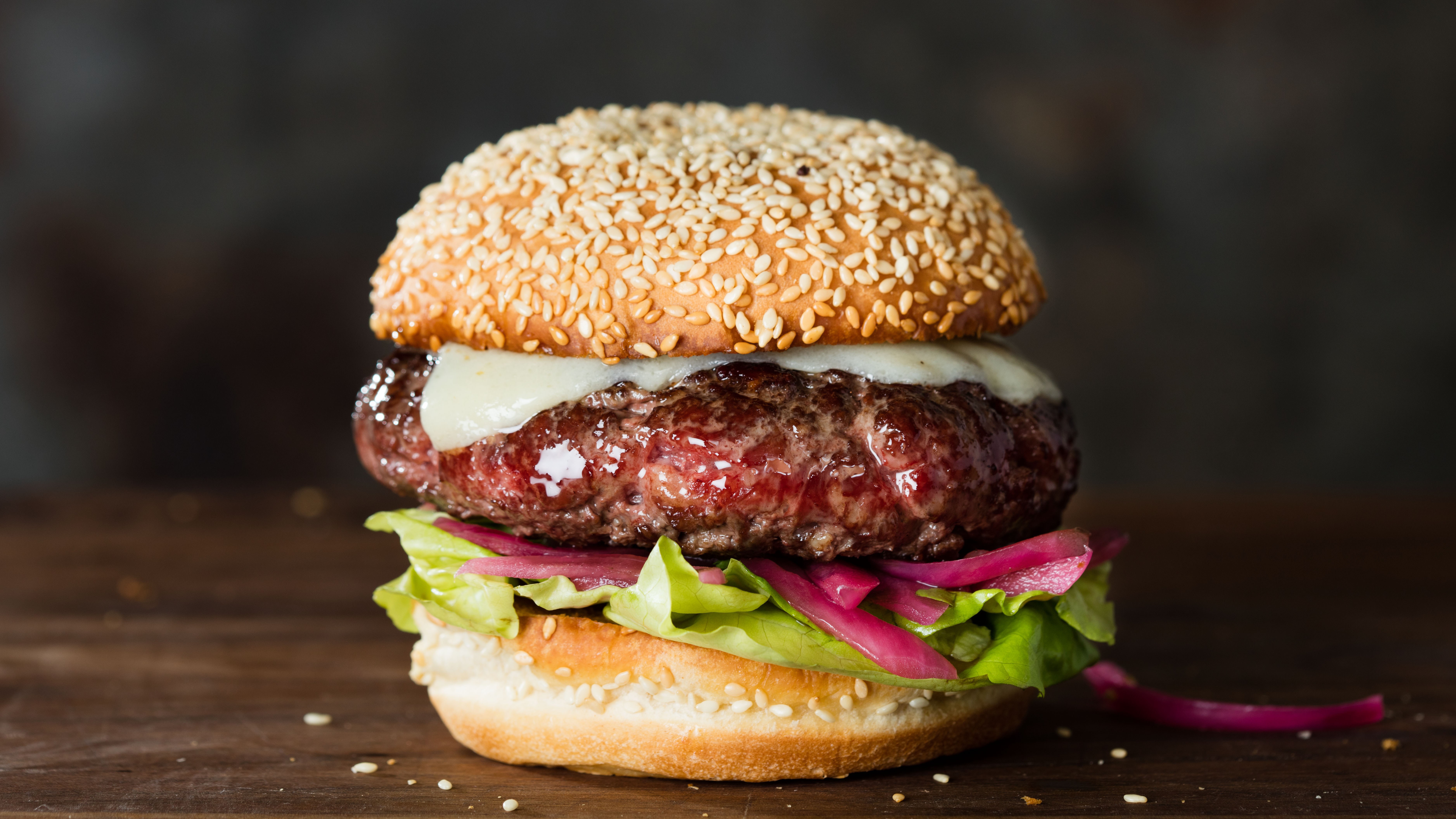
WHICH TYPE OF BEEF IS EASIER TO COOK?
Grass-fed beef is typically leaner. And as a result, chefs often add embellishments to a grass-fed burger to make it more juicy and tender. “To add fat and get caramelization, we use a flattop [grill] and use butter to sear our burgers,” says Anthony Pelosi, a chef at Grass Fed JP, a burger joint in Boston that sells grass-fed burgers.
“To enhance the flavor of the beef, we use a special seasoning mix with kosher salt, garlic powder, and onion powder and a couple other secret spices,” Pelosi says. “With grass-fed beef, you have a more natural, gamy flavor. The fact that our local supplier, Walden Local Meat, does not use any steroids, hormones, or antibiotics in their cows makes a huge difference in the taste.”
On the other side is the grain-fed burger, which makes up most of the meat that’s available to consumers and restaurants. Feedlots grow cows to a standard size, on standardized food, and they have a lot of them. You know what you’re going to get, and you know that you’re going to be able to get it. And those cows are bred to taste good.
John Shepherd, the owner of Seattle’s award-winning Red Mill burgers, says that’s why they’ve stuck with grain-fed beef. “Our meat is not grass-fed or locally sourced—we’re the opposite of what people are doing now,” he says. “Our product is an Australia bull meat mixed with Midwest trim at an 80/20 ratio. It gives it the taste. We don’t do anything with it besides cook it the way you want it.”
Cook’s Science Associate Editor Tim Chin developed two burger recipes to go alongside this article: one for grain-fed beef, one for grass-fed beef. The big difference? Cooking technique. Chin used whole cuts of chuck roast for each burger, quickly frozen and then ground in the food processor. For the grain-fed burger, which had more fat and extensive marbling, Chin chose a thin-profile burger, cooked on the stovetop to finish with crispy edges and a rich, unctuous flavor. For the grass-fed version, Chin wanted to highlight the flavor of the beef, while also taking care not to overcook this leaner, more delicate burger. He chose a thick, pub-style patty and reverse seared it—meaning, he started it in a low-temperature oven and then finished it with a quick sear on the stovetop. This technique gave him more control over the burger’s temperature, and more assurance that our grass-fed burger would end up tender, juicy, and packed with beefy flavor.
SO WHICH SHOULD YOU CHOOSE?
There are advantages and disadvantages to both ways of raising beef. It’s not black and white, so as the consumer, you have to decide what’s important. Do you care about knowing exactly where your beef comes from, are you skeptical of the idea of antibiotics in your food chain, do you like a fattier cut of meat, do you want your beef to taste the same each time you buy it? To figure out if your burger was brought up in a way you feel good about—and tastes good too—you have to look down the production line to make sure your cow was raised sustainably. “I always encourage people to ask their producers how they’re managing their animals,” grass-fed rancher Byrne says. “If they can’t answer the questions, that’s a flag.”
Check out our recipes for Grain-Fed Quarter-Pound Burgers and Grass-Fed Half-Pound Burgers.
Photography courtesy of SunFed Ranch.
Test Kitchen photography by Daniel Van Ackere.
